
Situations occur when the router restarts may need. For example, it is associated with errors in its work or it must be done after changing the settings through the web interface. There are different embodiments of the task. Each of them has its own actions algorithm and will be optimal only in certain situations. All the following methods are universal, so they can safely use the holders of routers from a variety of manufacturers.
Method 1: Button on the router
Almost all modern routers behind or on the side there is a button that is responsible for turning on and off the device. Most often, it is called "Power" or "ON / OFF". If such a method of rebooting suits you, just double-click this button, making a small pause between each press.
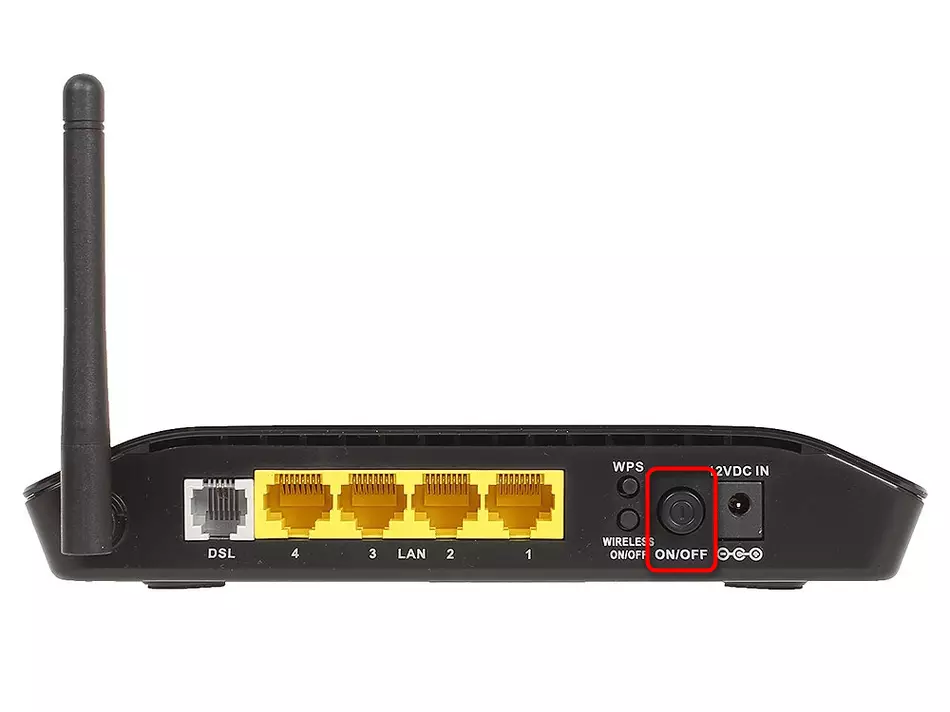
In the absence of a button, the reboot can be done by turning off the power or one of the following methods.
Method 2: Button in the web interface
This option involves using a virtual button, which is in one of the router settings management sections in the web interface. To implement this method, the user needs to be authorized in the Internet center itself and find the same button. Let's consider this method on a visual example.
- Open any convenient web browser and enter there 192.168.1.1 or 192.168.0.1. Go to this address by clicking the Enter key to get into the network equipment settings menu. We clarify that for successful transition, the router itself must be connected to the computer via the LAN cable or Wi-Fi.
- Enter authorization data and click on "Login" to go to the web interface. By default, in both fields, you most often need to enter Admin. If these values are not suitable, we recommend to familiarize yourself with other materials on our website, where there are instructions for defining an access key and username for authorization in the router Internet center.
- In some settings menu, the reboot option is transferred to the first section, which is most often called the "state" or "network card". Then do no further actions. Just click on this button to restart the device.
- If there is no such button, you will have to search for it in other sections of the settings. We will analyze this on the example of the D-Link web interface, since it is most standardized and looks like a menu from other manufacturers. After authorization via the panel, move to the System section.
- There, select the "Configuration" category.
- Opposite the "Reloading Device" inscription, click "Restart".
- Confirm the action by reading the warning message.
- Wait for the restart, and then go to the following actions with the web interface.


Read more: Definition of login and password to enter the web interface of the router
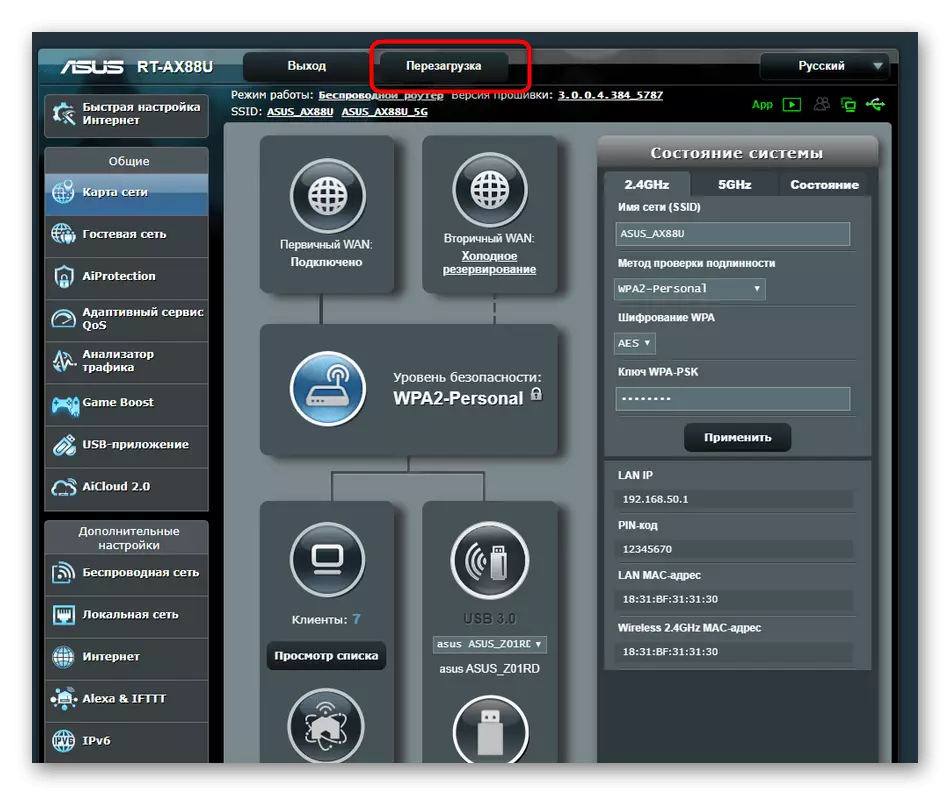
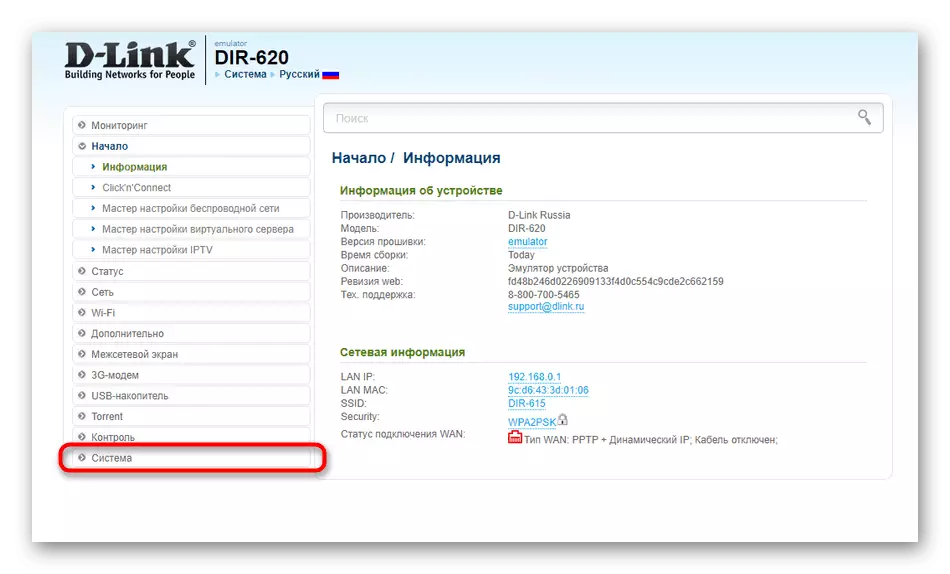
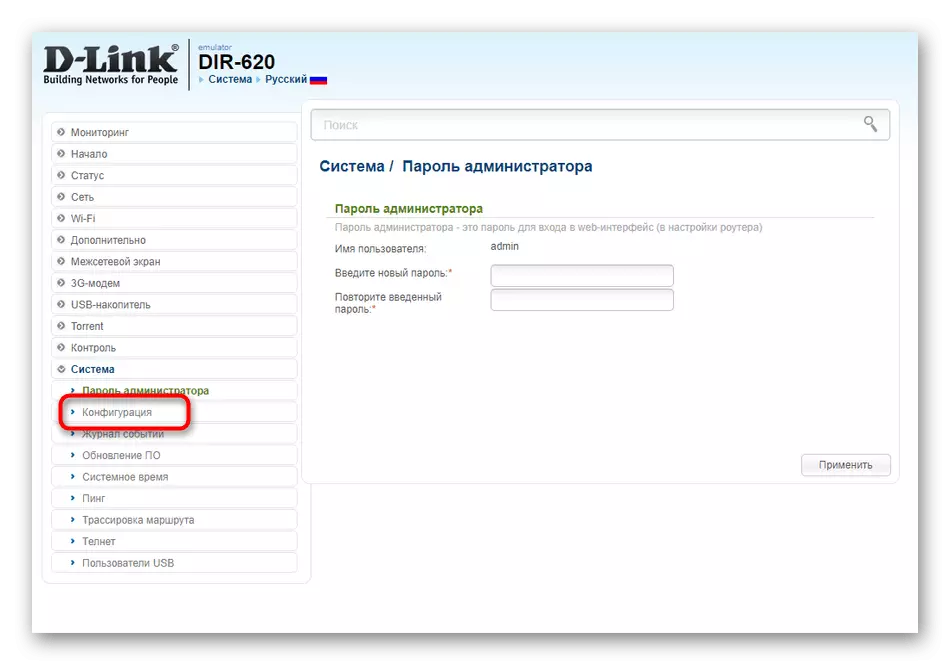
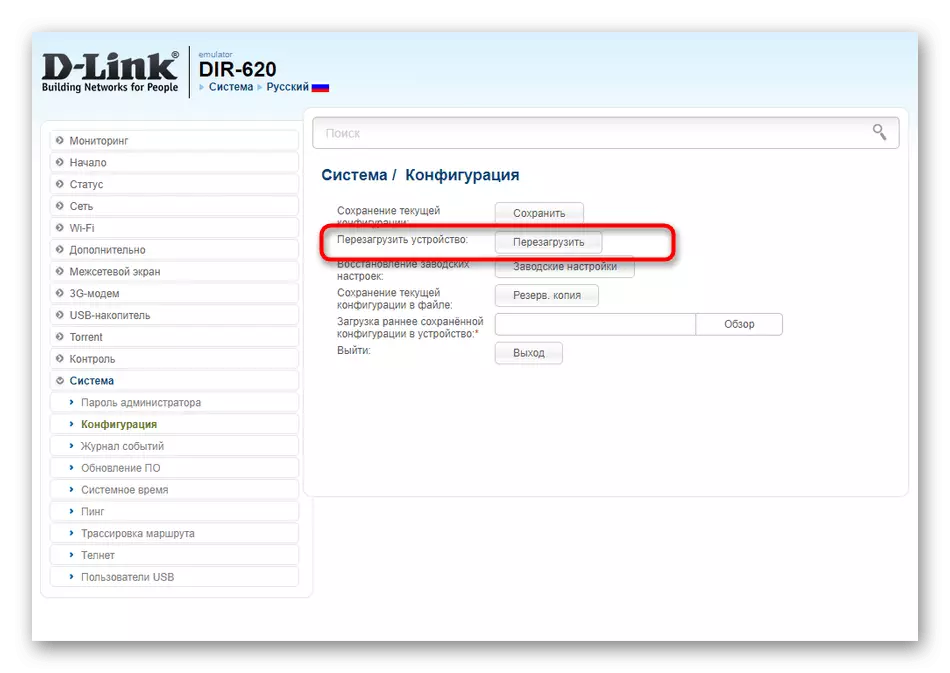
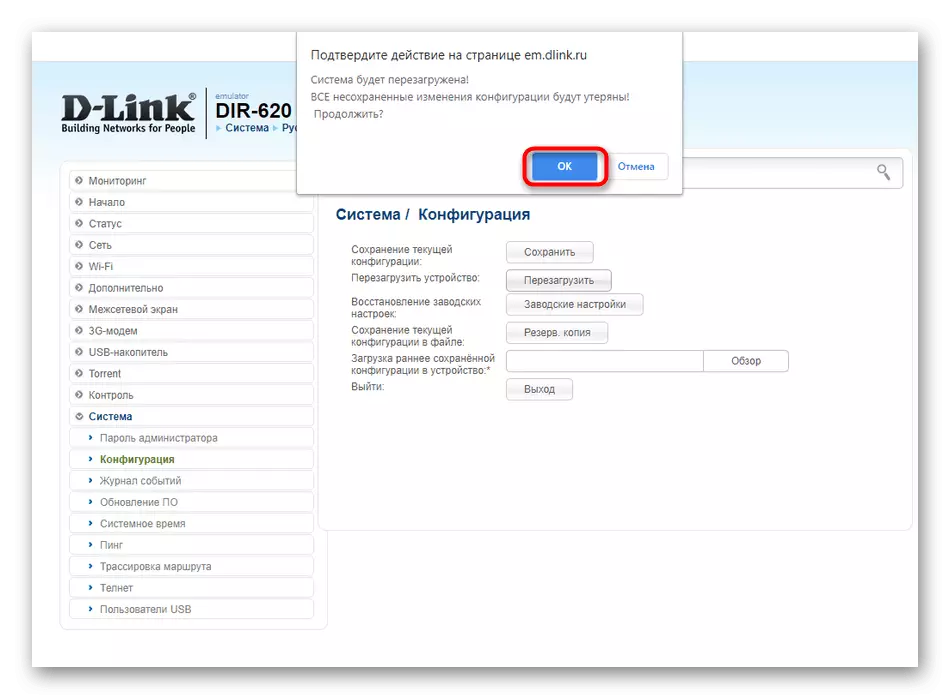
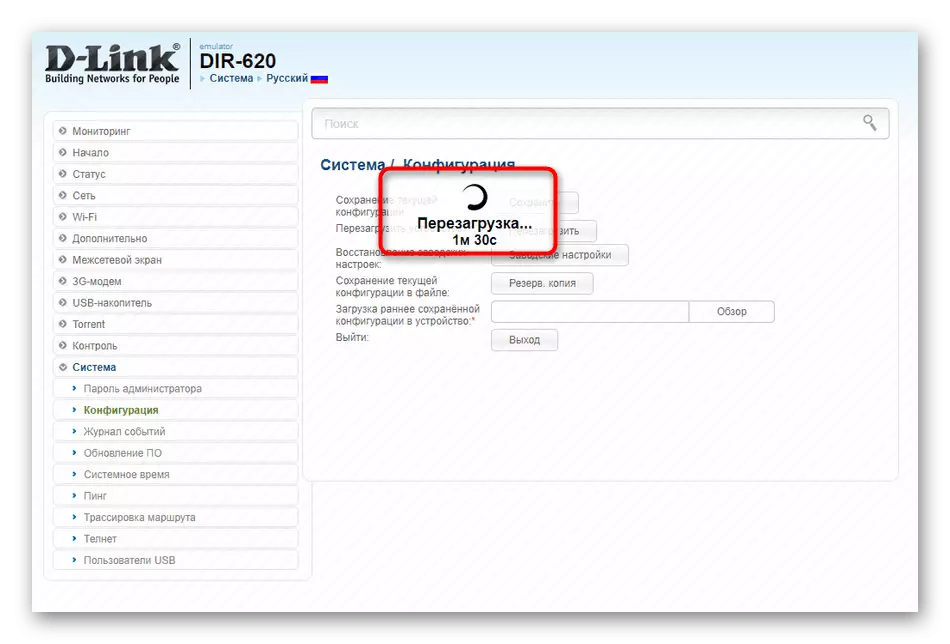
If you are faced with the menu items shown above do not match with displayed in the current Internet center, try to find the necessary button on the "System", "System Utilities" or "Administration" sections.
Method 3: Automatic Reboot Setting
Some manufacturers of network equipment in new versions of firmware add an option that allows you to configure the schedule to automatically restart the router at a certain time. This allows you to drop cache and data stored in RAM, slightly stabilizing the functioning of the device. Perform the configuration of such a reboot on the example of TP-LINK:
- Open the web interface where you go to "System Tools" and select "Time Setting".
- Specify the right time, because it is on this setting that the router reboot schedule will be oriented. You can click on "Get from Computer" if you want to transfer the date from the operating system. At the end, apply the settings by clicking on "Save".
- Now move to the category "Restart".
- Here you turn on the auto operation function on the schedule.
- Specify the days of the week and the time in which the router will go to restart. There is nothing difficult in this, because the user only needs to ask an accurate hour and note the necessary points checkboxes.
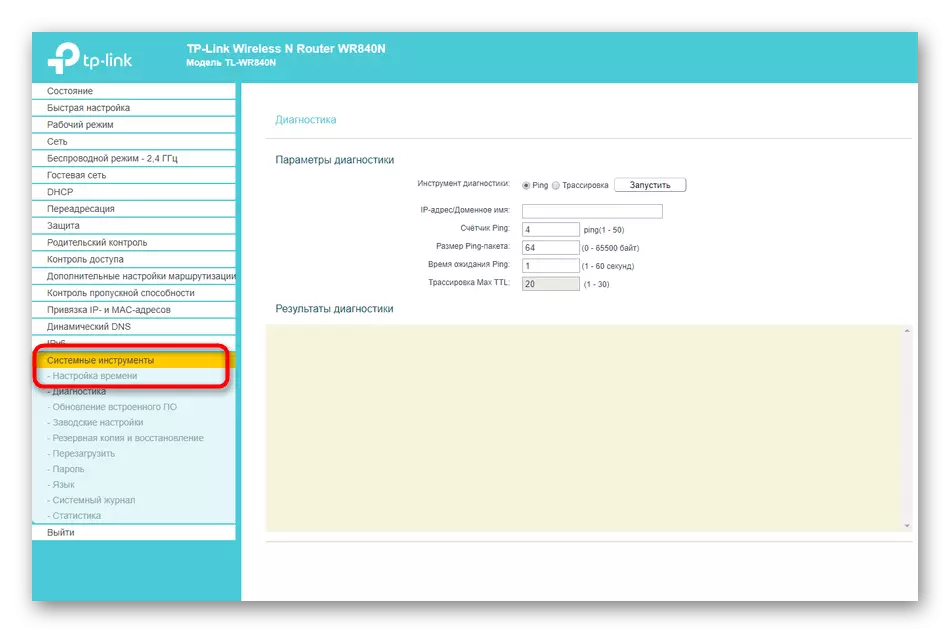
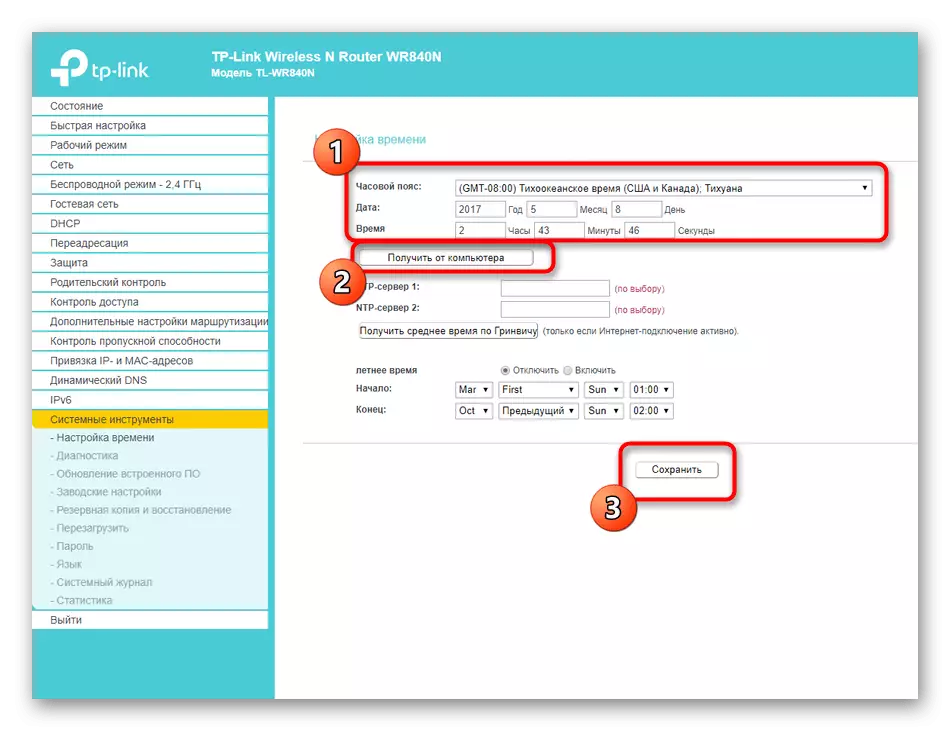
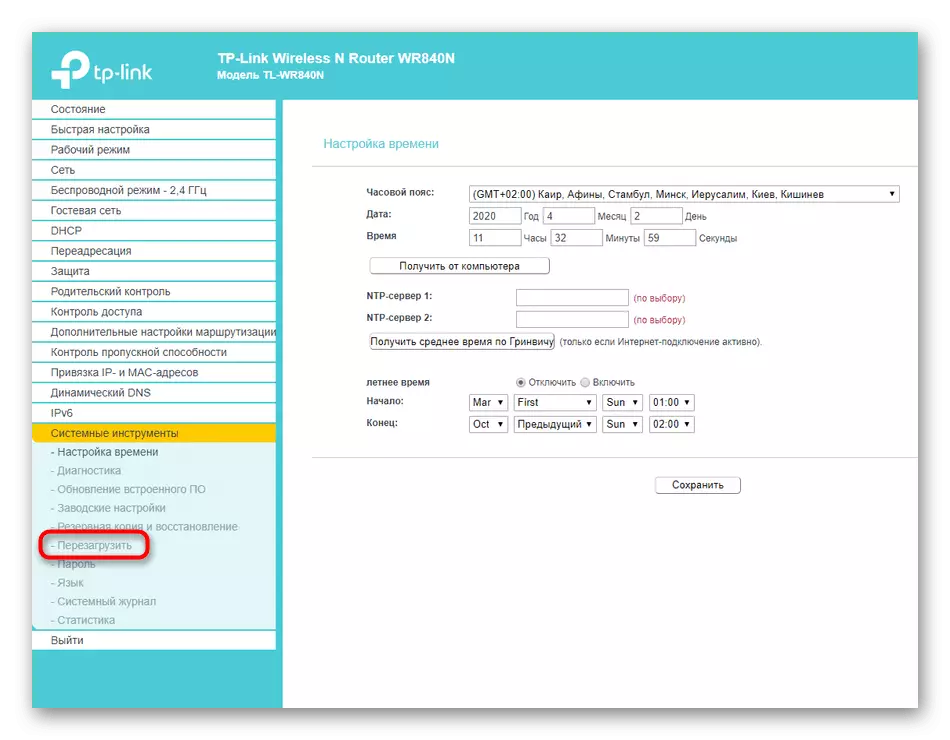
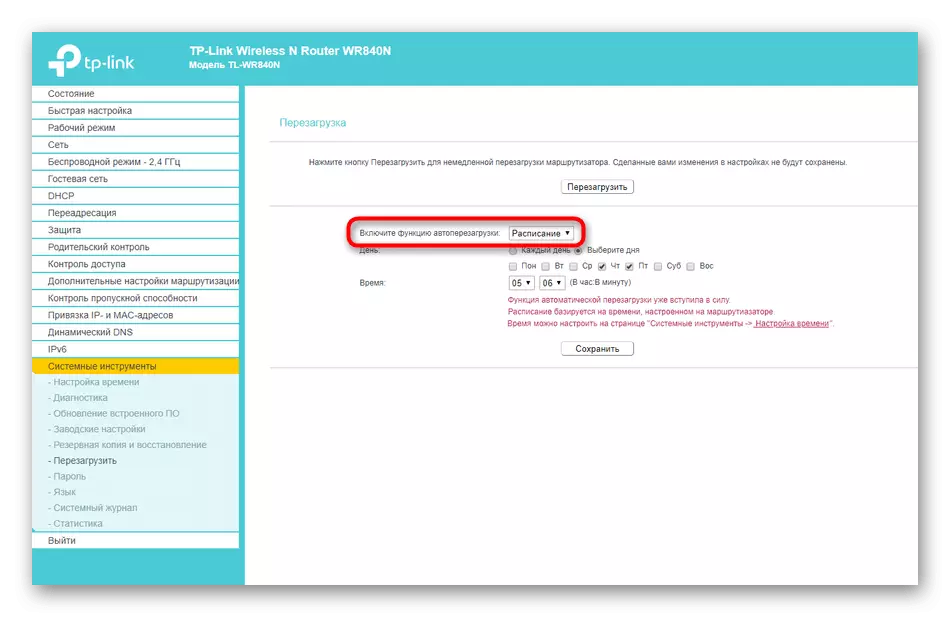
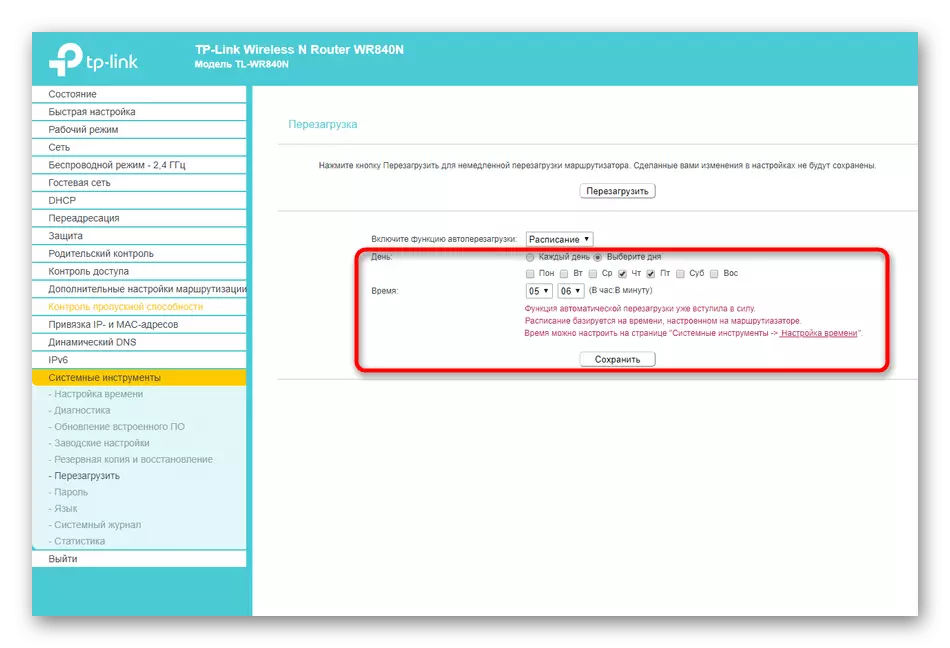
Save all changes and complete the interaction with the web interface. Now the router will automatically reboot every time at the specified time. If you at this point, for example, download anything through a browser, consider that after restarting the download may not continue.
Method 4: Using Telnet Function
Technology called Telnet is embedded in the Windows Operating Systems and is responsible for managing the router behavior through the standard command line application by entering different parameters. Not all routers support control through such an option, which can be clarified personally from the provider or a representative of the company that has developed the device model used. In addition, working with Telnet will not take much time and strength, so you can safely check whether the network equipment will restart after entering the command to the console.
- First you need to activate Telnet on your computer if this has not been done earlier. Open "Start" and go to "Parameters".
- There, select the category "Applications".
- Roll down the list, where find the inscription "Programs and Components", and then click on it.
- Through the left panel in the window that appears, go to "Enable or disable Windows Components".
- In the list of additional components, find "Telnet Client" and check the box near this item.
- Expect to complete the connection of the required files.
- You will be notified of the entry of changes in force.
- Now you can proceed to interaction with technology. To do this, run the console in a convenient way, for example, through the search for "Start".
- Enter Telnet 192.168.0.1 or Telnet 192.168.0.1 to connect to the router.
- If the connection has passed successfully, you can move to a reboot.
- This is done by entering only one SYS Reboot command.
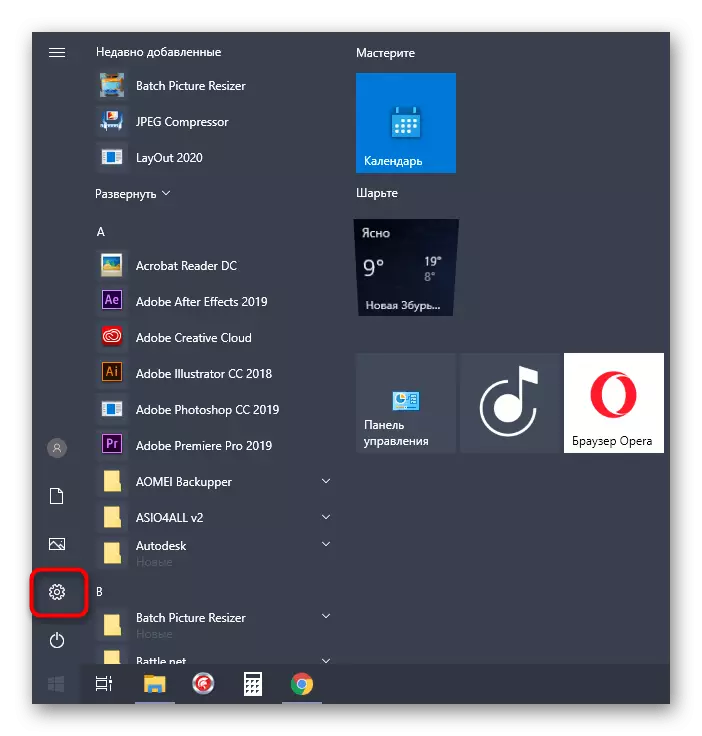
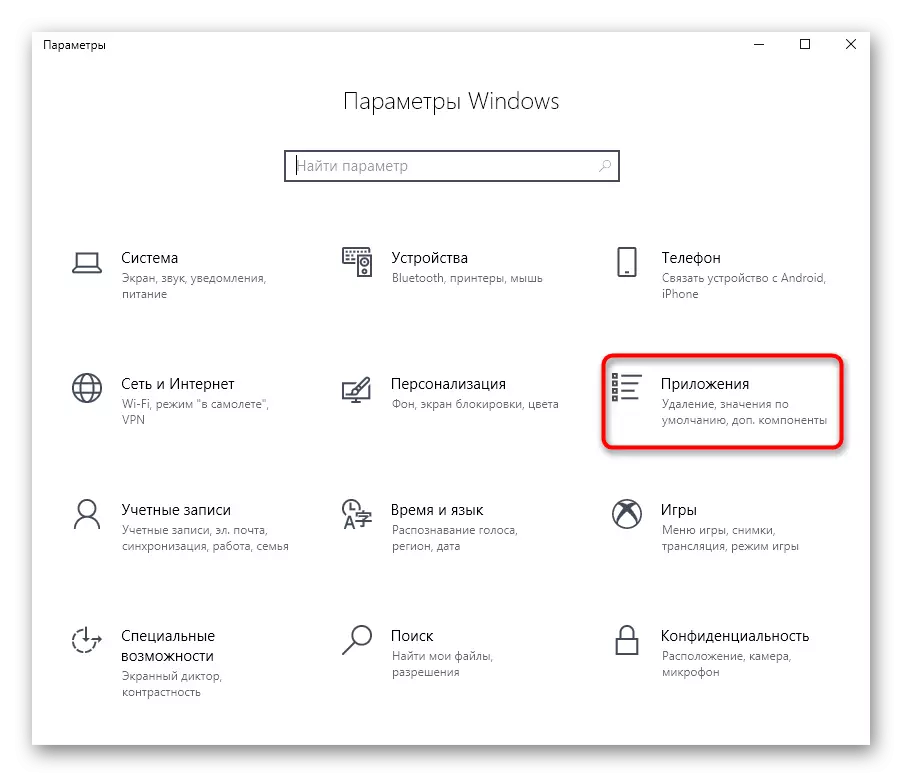

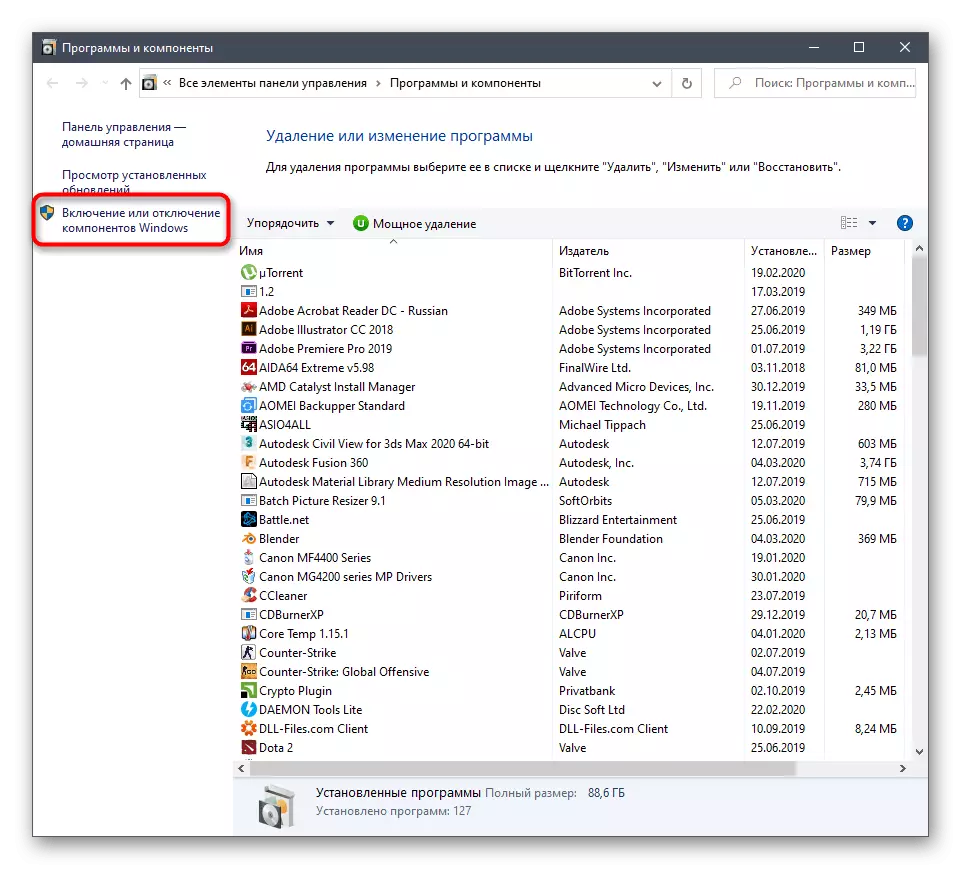
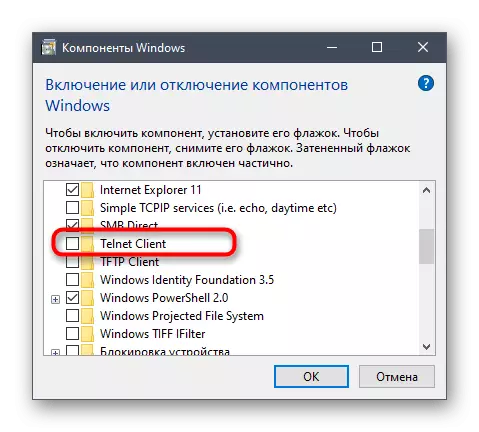
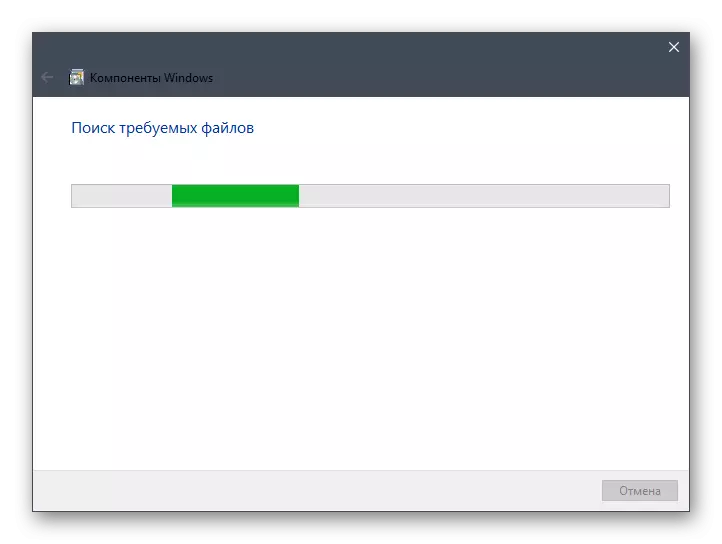

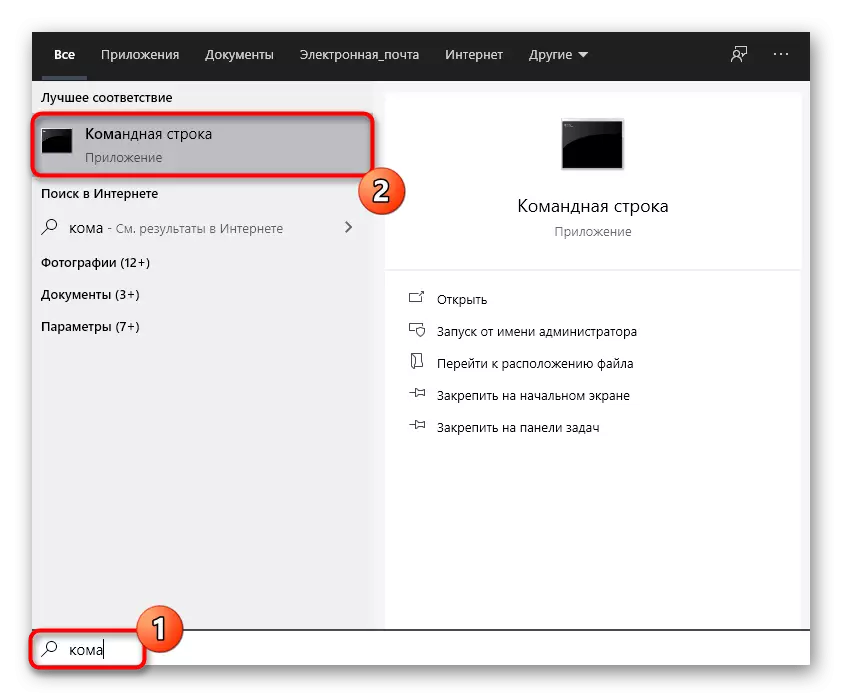
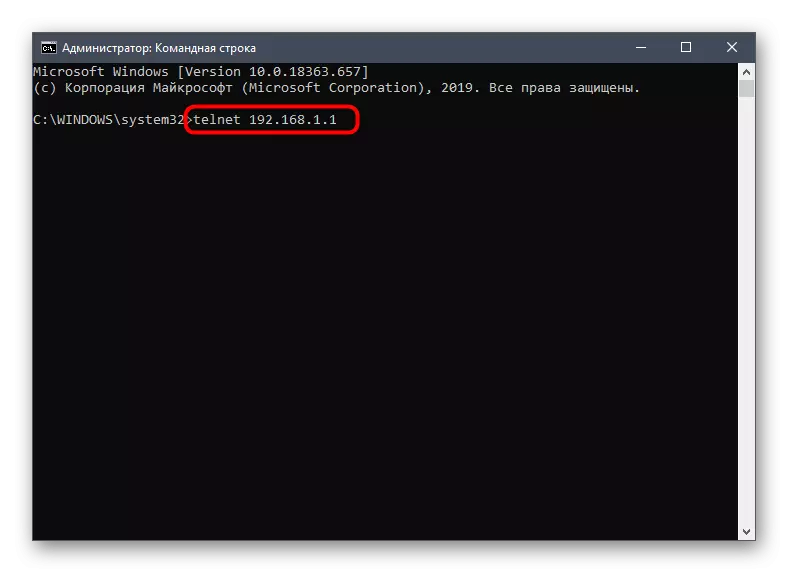
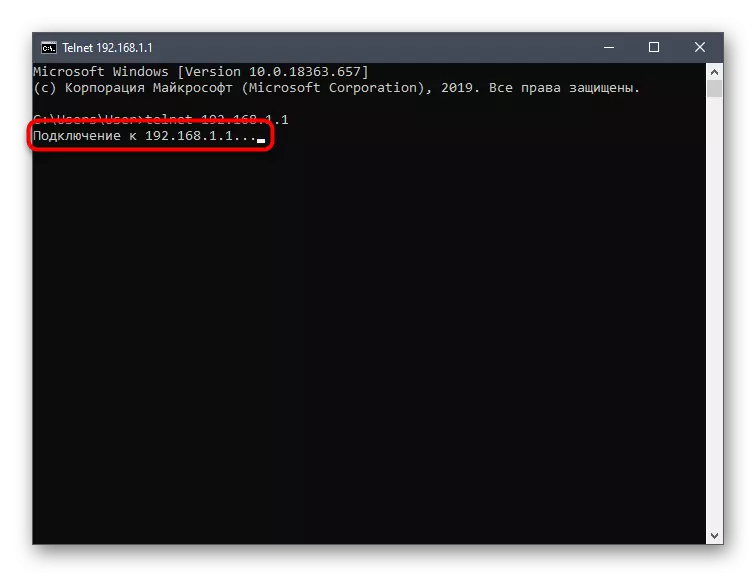
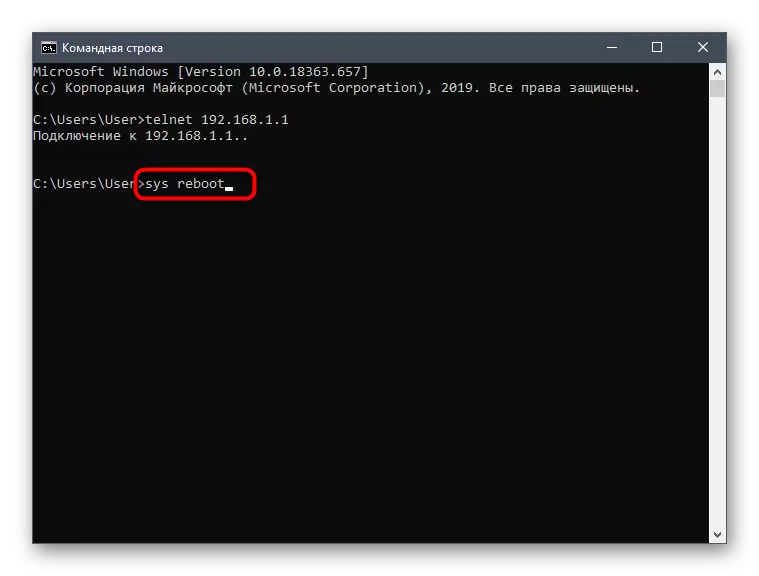
The screen should notify that the team is successfully applied. Wait for the full turn on the router, and then go to work with it.
If you need to restart the next time, Telnet is not necessary, immediately open the console and enter the commands mentioned.
You only have to choose a method that seemed suitable for regularly or once to restart the network equipment used. When considering the presented methods, consider the features of the router and implement the appearance of its web interface.
